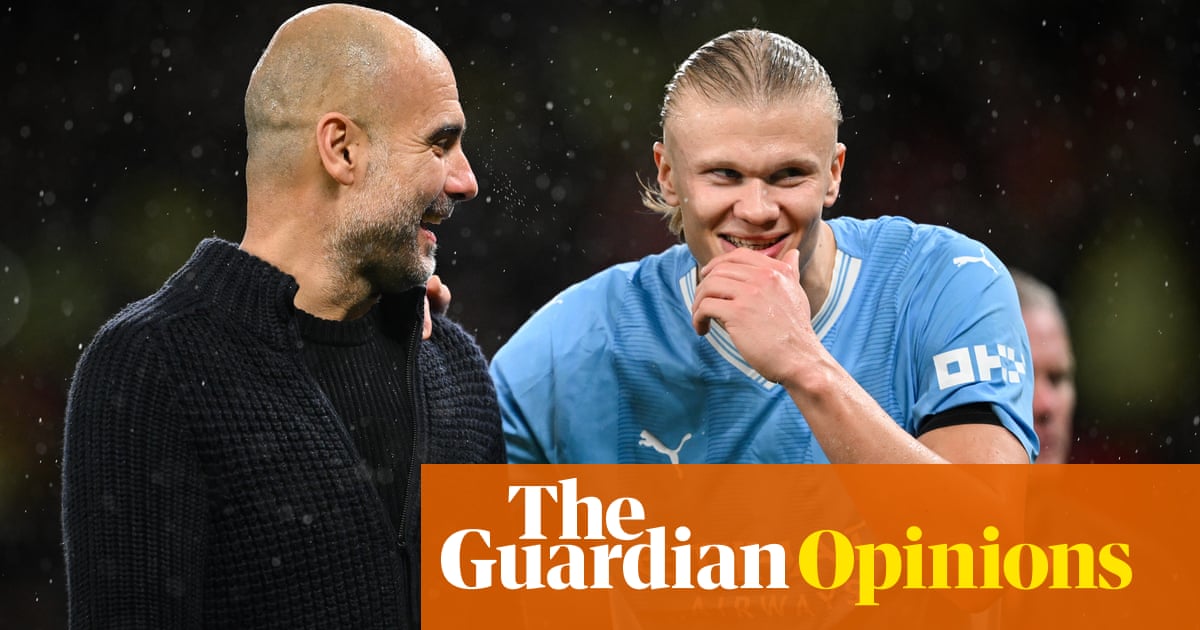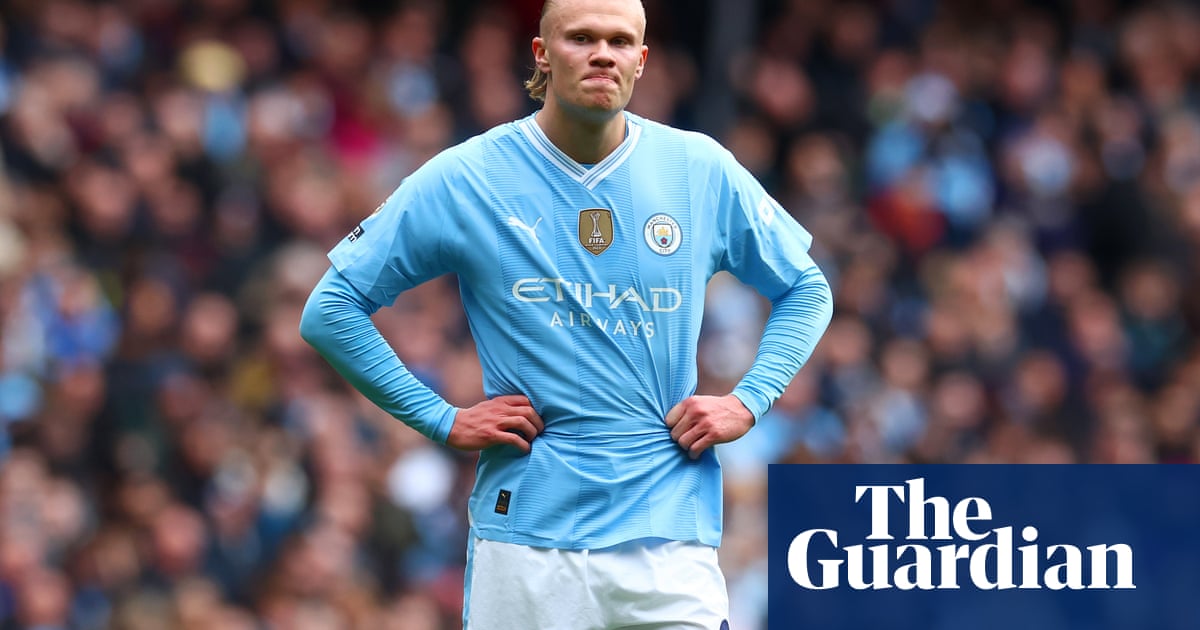
“Body language is everything in life … If you are not positive in your mind and you cannot accept that you can make mistakes, and how you react to that, and how you can help when your mate makes a mistake, this kind of thing is far beyond the tactics. That is everything in life.”
Pep Guardiola’s recent urging to Erling Haaland reveals the sophistication of his leadership skills and understanding of human nature. This is culture-building, investing in the long term all the time, even when trying to win the match in the short term. It’s where he still differs from most other leaders in sport and beyond. How what others may see as “the small stuff” is actually “the big stuff”. The Manchester City manager works skilfully with our most crucial human performance tools in our personal and professional lives: mindset and behaviours.
It’s where one of sport’s greatest life lessons leaps out at us, but it’s a lesson that continues to go largely unheeded. In both childhood and adult life, we rarely schedule time to develop our mindset and behaviours. But for Guardiola, they come first not last in his priorities. We often don’t even notice how we are thinking and behaving – but the Guardiola lens zooms in on these constantly. We are often uncomfortable discussing the way we think and behave – but for Guardiola, it’s natural to talk about them. Why? Because it would be madness and deeply harmful to performance not to. Moreover, this goes beyond performance, it’s how we are wired as humans and it’s the key to thriving on and off the pitch.
Guardiola doesn’t want Haaland to show his frustration on the pitch in his facial expressions and movements. “He has to have this mood where he’s positive and he’s saying: ‘OK it will come, it will come.’” At first, there seems to be a paradox between the animated Guardiola we see conducting his team from the touchline and this philosophy of believing “it will come, it will come”. But it would be a mistake to interpret these words as soft or passive – they acknowledge how our minds can work best, and so are smart and performance-focused. Guardiola highlights an opportunity to notice and understand our human brains and bodies in order to improve our mindset and behaviours in the next moment.
When players beat themselves up after conceding a goal, they directly damage their prospects of playing well as the game kicks off again. That’s what Guardiola can see when Haaland gets frustrated. He challenges an engrained macho narrative that justifies self-criticism as part of being tough and setting high standards. But as various strands of neuroscience now show us, it’s much more helpful to performance to accept the mistake, acknowledge your flaws and focus on what you can do next.
When I’ve observed or worked in football environments, I’ve been struck by the overwhelming focus on technique and tactics. Debriefs of matches (over)analysed technique and tactics, yet seldom stopped to consider what was in the minds of players when showing a clip of action. Gameplans centred on technique and tactics, yet omitted discussions of who the players wanted to be on the pitch, how they wanted to interact, and how they wanted to respond to the inevitable highs and lows of the upcoming match.
TV football analysis focuses on goal moments, seen as pivotal because they relate so closely to the result. But that’s a trap. Guardiola looks elsewhere for pivotal moments – the mood of players on the bench or how players respond after they concede a goal, how they hold themselves on the pitch or on the bench, how they support each other. These are key moments where players affect the match in ways within their control, even if they’re not what the cameras pick out.
The attraction of football is boosted by the uncertainty of outcome: a goal can be scored against the run of play or a brilliant team can hit the bar repeatedly and fail to score. We all know this, and it reflects much of broader life off the pitch too. Yet it can be hard to move our minds away from focusing on goals scored or conceded. Guardiola doesn’t get sucked into that way of thinking and prioritises helping his players to avoid it too.
There is a constantly growing body of research about how the brain and the body connect. Philosophers first explored this centuries ago. Now with advances in modern neuroscience, we understand much more about how the way that we move affects the way that we think and feel. Somatic theory dispels the false belief that our brain somehow thinks separately from our bodies and explains how changing our posture and stance can change how we feel and how we behave next.
Novak Djokovic explains how his mental strength isn’t innate but something he constantly works at. How his mental fortitude isn’t about never being distracted, but noticing the distractions when they come, accepting them as entirely human, and then swiftly returning his attention to the next moment in the game.
Too often, I hear coaches directing players to stay focused, making them feel bad for losing focus, rather than accepting that this is how our brains work, and helping them to swiftly redirect their attention.
It’s where sport offers us a way to learn about how we can change the course of the game in front of us, whether our job plays out on a football pitch or in an office. But I don’t know why it’s not yet part of how we learn about sport at school, nor part of most coaching courses. Developing a mindfulness practice that helps us to notice our thoughts, feelings and how they relate to our behaviours rarely appears on athletes’ training programmes. But this is clearly an area that offers greater performance gains. And I’m hopeful that in a future version of Fantasy Football, there’ll be points given for how the players in your team responded on the pitch when they made a mistake or conceded a goal.












